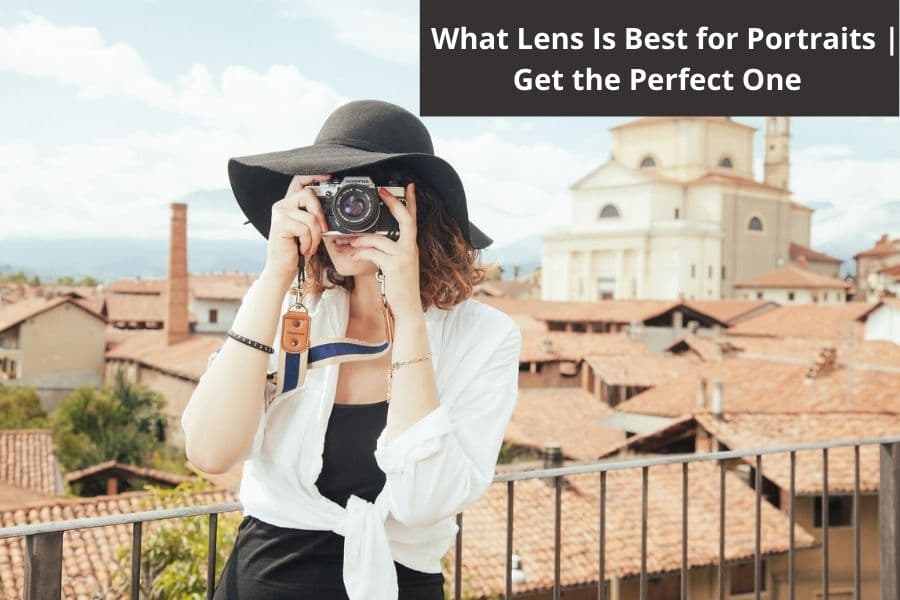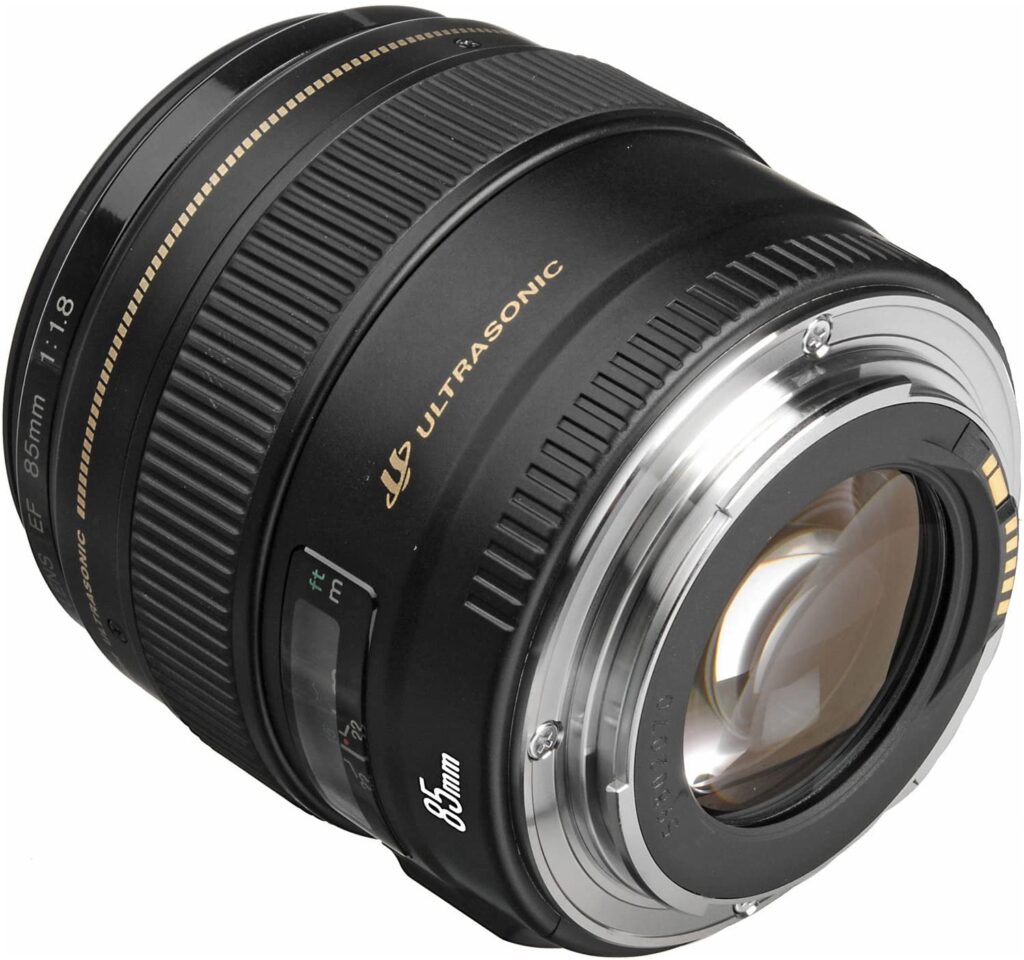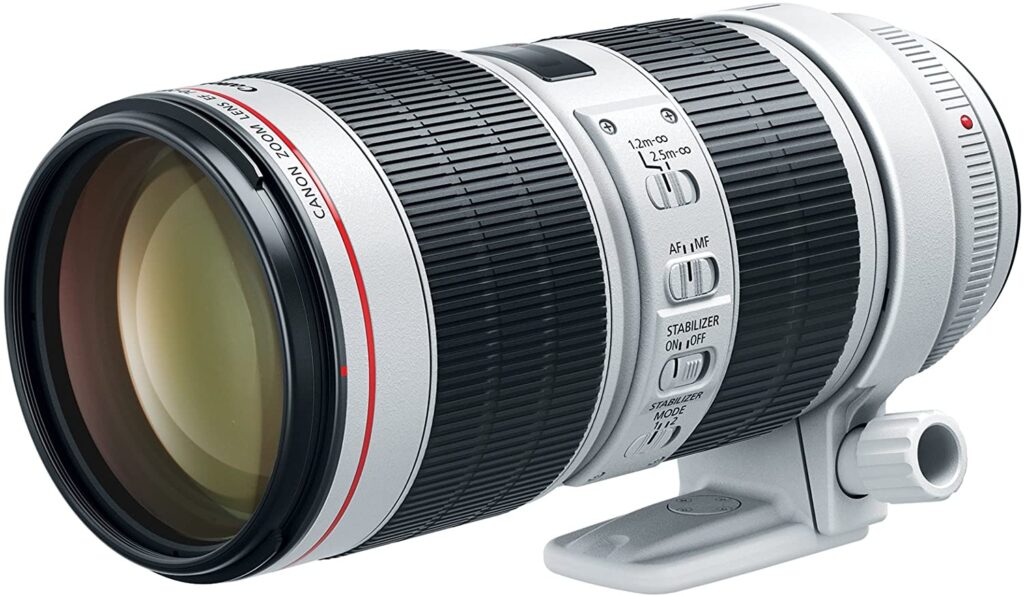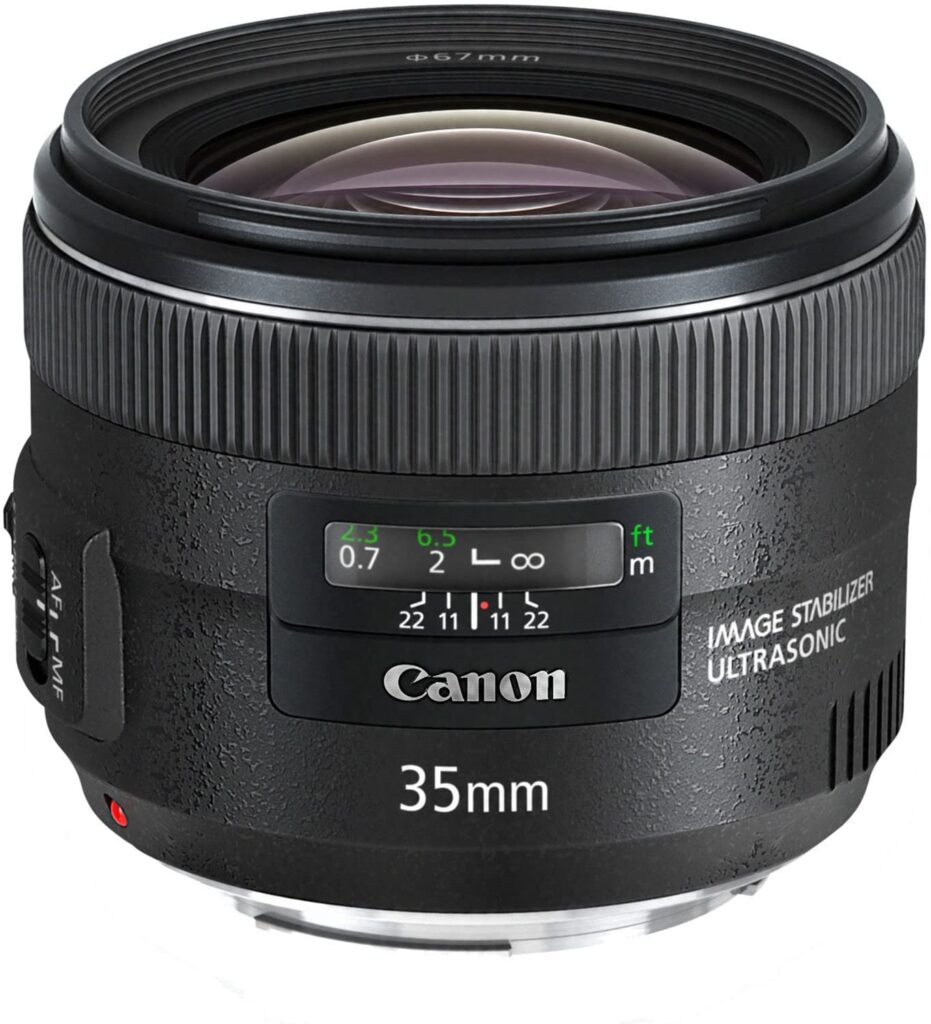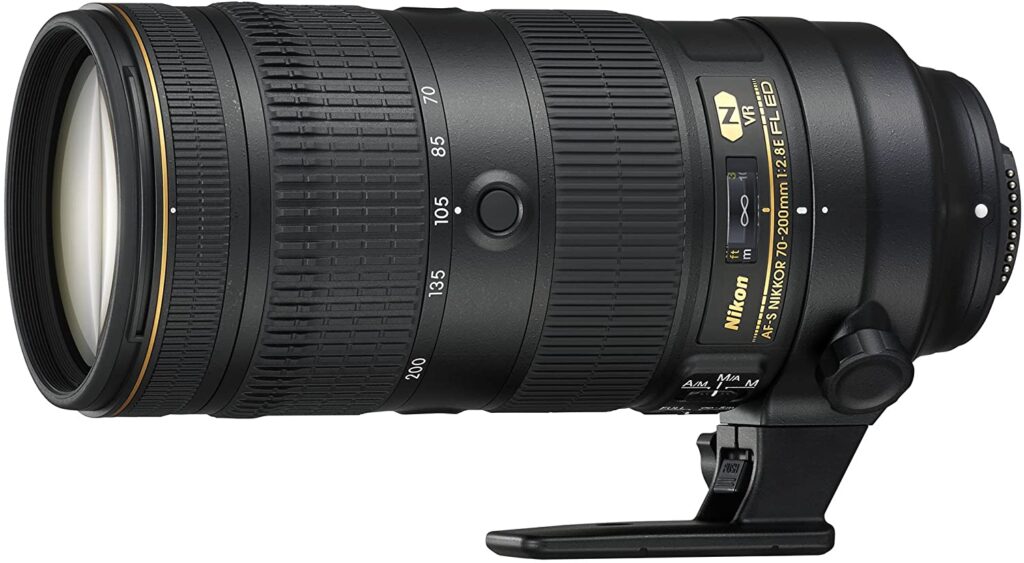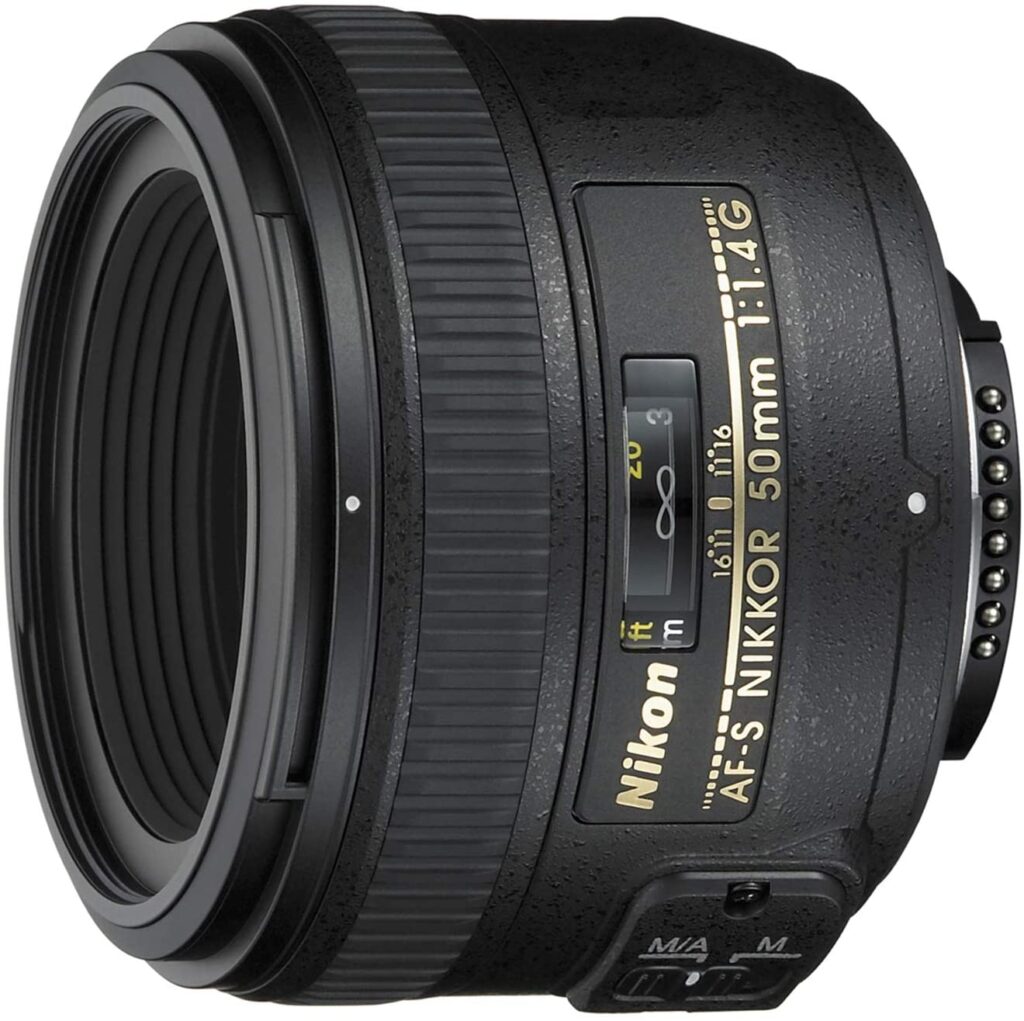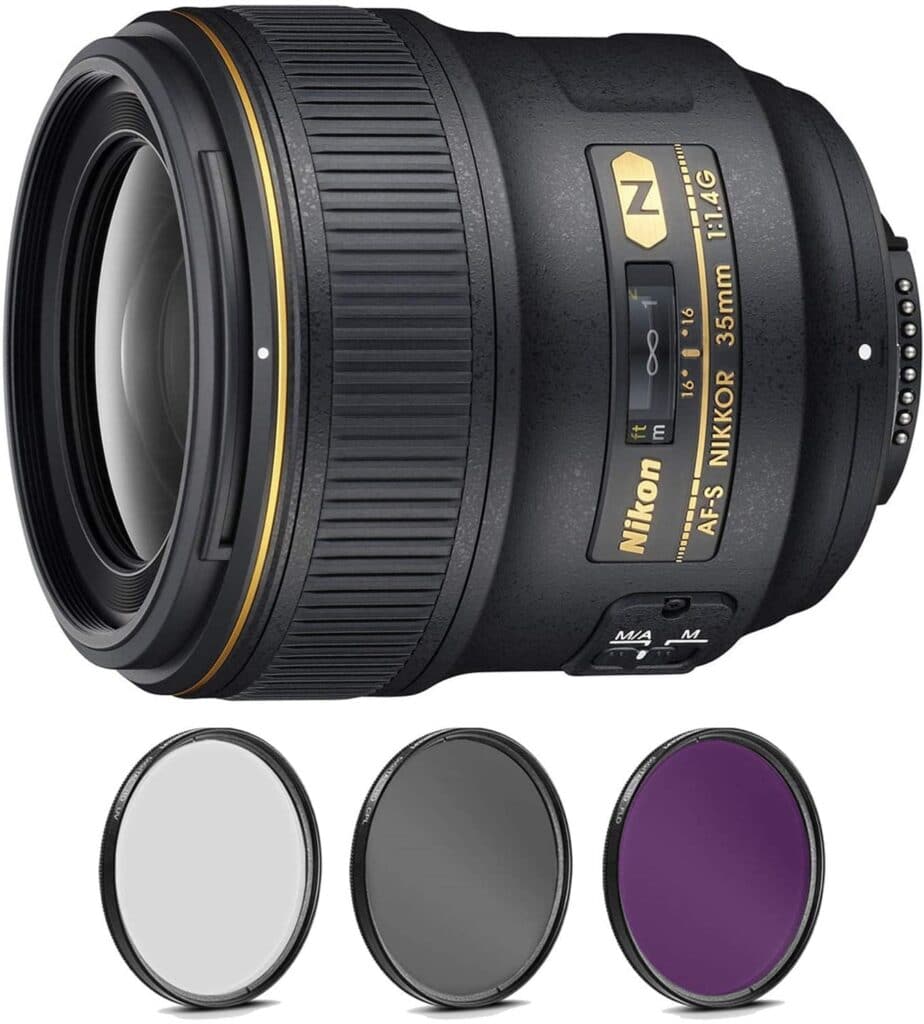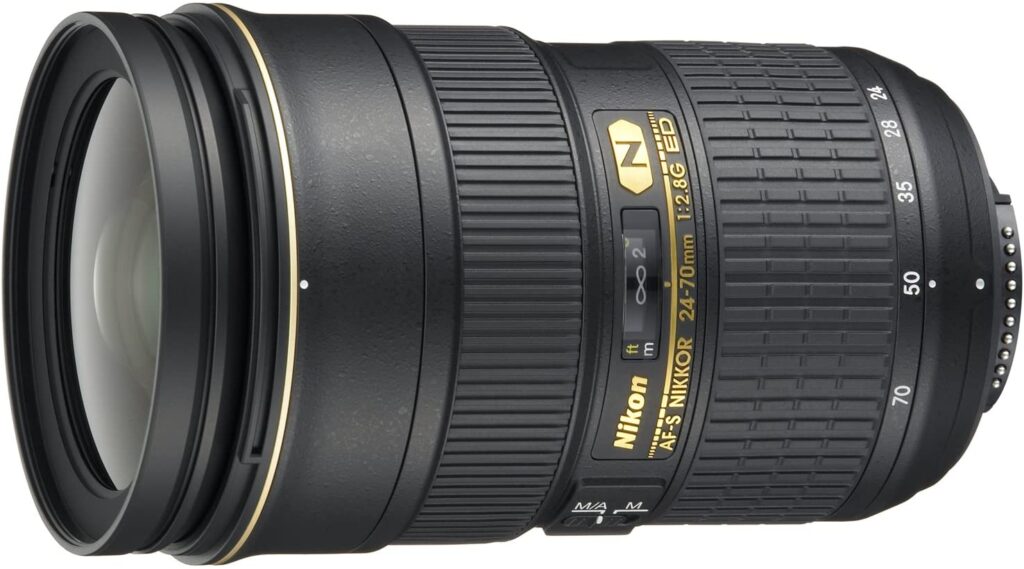As an Amazon Associate I earn from qualifying purchases.
The quality of portraits mostly depends on the quality of the lens rather than the camera body. Different lenses are for different types of photography. Your lens selection can change the look and mood the image may convey. So, for perfect-looking portraits, you need lenses that are specialized in portraits.
Among various types of lenses, what lens is best for portraits? Its answer depends on a number of factors, so it is subjective. However, some lenses are extremely better at capturing portraits than other lenses. According to National Geographic photographer Bob Holmes, primes lenses produced better portraits than zoom lenses for having fixed and wider apertures.
Let’s explore these lenses and find the best one for shooting portraits.
Contents
Reviews of Best Lens for Portraits
We have gathered the 10 best lenses for shooting portraits. These lenses are high-quality made, produce excellent quality images with shallow depth of field, and are long-lasting.
1. Best of the Bests: Canon EF 85mm
Key features
- Prime lens
- f/1.8 aperture
- Ultrasonic motor
- 85mm focal length
Shallow Depth of Field
Canon 85mm lens has an f/1.8 wider aperture which separates the subject from the background beautifully and creates eye-catchy bokeh. The wider aperture also works exceptionally well at low-light and produces noise-free beautiful looking images. Its natural field of view captures perfect-looking portraits every time.
Fast and Reliable Autofocus
The utter-sonic monitor technology makes the lens capable of doing super-fast autofocus. So, even at night, you get consistent autofocus, and your subject remains focused all the time.
Beautiful and high-quality Image
A wider aperture makes room to enter enough light into the sensor, producing sharp, clear, and beautiful-looking images every time. The natural field of view, along with the subtle bokeh effect created by this lens, makes every portrait live and perfect.
Pros
- Creates nice bokeh
- Performs excellent even in low light
- Autofocus is very fast
- The wider aperture allows producing smooth and sharp images
- Natural field of view
Cons
- Not so versatile
2. Best for Wildlife Portraits: Canon EF 70-200mm
Key features
- Consistent f/2.8 aperture
- Zoom lens
- Air Sphere Coating
- 70-200mm focal length
Constant f/2.8 Aperture
EF 70-200 is a lens with variable focal length, and in most cases, variable focal length lenses come with variable aperture. But this lens has a consistent f/2.8 aperture that allows the lens to pass the same amount of through at every focal length, resulting in a shallow depth of field and sharp image.
Fast and Near-silent Autofocus
This canon lens is ideal for wildlife shoots and any type of long-range subject capturing. The autofocus of the lens is very fast, and it makes a minimal sound. So, you do not disturb the subject while focusing on it, allowing you to capture perfect moments.
Sharp, clear and Bright Image with Stunning Blur
This L series 70-200mm lens is most probably the most popular lens among photographers. It features inbuilt image stabilization, so even if your hands shake a bit while capturing, you’ll get perfect shots. The image quality is stunning, sharp and the bokeh effect produced by this lens is marvelous.
Pros
- Creates shallow depth of view
- Very versatile
- Ideal for using for capturing photos in many different situations
- Fast and silent Autofocus
- Great flare suppression
Cons
- A bit heavy
3. Best Budget-friendly: Canon EF 50mm
Key features
- 50mm focal length
- Wide f/1.8 aperture
- Stepping motor
- Small and lightweight
Outstanding Bokeh Effect
Canon 50mm f/1.8 is one of the best-selling canon lenses, and it is considered the gem of the Canon portrait lens. It has a wide f/1.8 aperture which creates a shallow depth of field and an attractive bokeh effect. It’s very hard to match the capacity of image capturing at night at this price range.
Natural Field of View
For portraits, 50mm focal length is very suitable. This focal length makes the portraits give a natural look. It allows capturing the portraits with a large field of view, which is not possible with a long focal length lens. Though, if the camera body has a crop sensor, then the focal length becomes 80mm, and this focal length may not be the best but not bad as well.
Extreme Fast Autofocus
The autofocus capability of this 50mm STM lens is up to the mark. Even if low light, this lens performs way more superior than expected. Its fast and reliable autofocus ensures high-quality portraits. The wider apertures allow clicking photos with high shutter speed at night as well.
Pros
- Wider aperture creates nice bokeh
- Great for night-time shooting
- Fast and continuous silent autofocusing
- Natural field of view
- Image and video quality is up to mark
Cons
- No stabilization
Read next: Canon EF 50mm Lens Depth Review
4. Best for Wide Portraits: Canon EF 35mm
Key features
- Wide-angle prime lens
- f/2 aperture
- 63degree angle of view
- Ultrasonic motor
Wide-angle portraits
Most commonly, a prime lens has an angle of view of 45degree. The Canon 35mm wide-angle lens has a 63degree angle of view. So it can capture a larger area than a standard prime lens. The images from this lens look different and aesthetic. It covers a larger area, and that gives the portraits a new and fresh look.
Fast Autofocus
This lens contains an ultrasonic motor, which makes the autofocusing fast. Even in low light, the autofocus of the lens works exceptionally well. The wide aperture and fast autofocusing create excellent portraits every time. It is possible to click sharp portraits with very little exposure time with this lens.
Sharp and contrasty image
Its wide f/2 aperture allows entering enough light on the sensor. Every time you’ll get sharp and super clear images even if you use high shutter speed. The lens is very small, and it adds negligible weight to the camera body, making it very easy to carry.
Pros
- A wide field of view captures more area
- 35mm focal length is equivalent to human eyes
- Superfast autofocus
- Sharp and clear portraits
- Great for environmental portraits
Cons
- Bokeh is not so good
5. Best Natural Focal Length Range: Canon EF 24-70mm
Key features
- 24-70mm focal length
- Consistent f/2.8 aperture
- Ultrasonic motor
- Standard Zoom Lens
Portraits suitable focal length range
Portraits look natural between the focal length of 30-60mm, and this lens features this focal length range. It allows the lens to cover a wide field of view that makes the image look very natural. This lens’s focal length is perfect for capturing portraits, even if you have a cropped sensor camera.
Consistent f/2.8 aperture
The lens maintains an f/2.8 aperture to the whole zoom range, and the image it helps to capture turns out outstanding. This aperture is pretty wide and assists in capturing sharp and noise-free images. Even in low light, it performs exceptionally. The bokeh looks very attractive, making the whole image pleasing.
Versatile and Speedy Autofocus
For being a zoom lens, it can adjust the focal length between 24-70mm. So it is versatile and allows you to capture distant subjects without moving from your place. The ultrasonic motor makes the autofocusing very fast, and you can well-focused sharp portraits using this lens.
Pros
- Produces high-quality portraits
- Great performing on day and night
- Very fast and silent autofocusing
- The focal length range is portrait friendly
- Versatile
Cons
- No image stabilization
6. Best for Close-up Portraits: Nikon AF S NIKKOR 85mm
Key features
- 85mm focal length
- f/1.8 aperture
- Silent wave motor
- Prime lens
Beautiful Bokeh
Nikon 85mm f/1.8 prime lens produces one of the best bokeh. It is a dreamy portrait lens that makes every portrait look stunning, and the bokeh is soft and pleasing. Without any doubt, the end results this lens produces are very pleasing. It is tough to find a match for this lens at this price range.
Ideal focal length
The focal length of this lens is 85mm, which is one of the most ideal focal lengths for portraits. This lens captures quite a large field of view and makes the portraits look awesome. The focal length maintains an adequate distance between the subject and camera and captures portraits with a wider view.
Quite versatile Yet compact
This lens is ideal for both interior and outdoor photography. So you can use this lens on most occasions and events. The compact built makes it easy to carry the lens, and as it is lightweight, you do not feel you are taking any extra weight.
Pros
- Wide aperture creates attractive looking bokeh
- The field of view is quite large
- Fast and silent autofocus
- Suitable for nighttime shooting
- Produces sharp, and clear image
Cons
- Built quality is not great
7. Best for Sports Portraits: Nikon AF-S NIKKOR 70-200mm
Key features
- Constant f/2.8 maximum aperture
- Flawless focus
- VR image stabilization
- Nano Crystal Coating
Smooth Background Blur
Cream-like soft background blur and subtle bokeh effect add beauty to the portraits, and this lens is expert at creating those. The blur this lens creates is buttery soft, and the portraits look very pleasing. Its bokeh effect is one of the best that a zoom lens can produce. The zooming capability allows you to get close-up portraits as well.
Flawless and Super-Fast Autofocus
Many high-end lenses mess up while in autofocus. But this one is exceptional and capable of doing flawless autofocus in very little time. The autofocus also ensures no breathing effect, even if you are zooming.
Versatile
Nikon 70-200 f/2.8 lens is versatile in many ways. Its variable focal length allows you to choose between and capture perfect portraits. The fast autofocus and wider aperture make this lens ideal for a wide range of occasions such as sport, wildlife, weddings, and many more.
Pros
- Creamy smooth background blur
- Consistent even in lowlight
- Superfast autofocus with focus lock capability
- Reliable image stabilization for sharp images
- Produces sharp, clear, and high-quality portraits
Cons
- The lens is quite heavy
Read Next: The 5 Best Canon Lens for Sports | For Every Budget
8. Best for Low light portraits: Nikon AF-S FX NIKKOR 50mm
Key features
- 50mm focal length
- Wide f/1.4 aperture
- Prime lens
- Ultrasonic motor
Natural Depth of Field
This Nikon prime lens has an f/1.4 maximum aperture. The background blur this lens creates is soft looking, and the bokeh effect is more stubble than any other lens. The wide aperture allows the lens to produce eye-catchy and sharp portraits.
Perfect portraits every time
Nikon 50mm lens comes with Super Integrated Coating. This coating increases the efficiency of light transmission. It helps to capture images with more detail and contrast. The color looks more vibrant and true to life. All these make the portraits look perfect and well-detailed.
Low Light Beast and fast Autofocusing
The wide f/1.4 aperture allows entering an enormous amount of light into the sensor. It can capture without noise in the image at low light, and the shutter does not need a long exposure. The autofocus of the lens is flawless, and it works blazing fast, even at night.
Pros
- Superfast autofocus
- Produces natural depth of field
- Color consistency is excellent
- The wider aperture allows capturing sharp and vivid images
- Lightweight and compact
Cons
- No stabilization
9. Best Bokeh Effect Portraits: Nikon AF-S NIKKOR 35mm
Key features
- 35mm focal length
- Wide f/1.4 aperture
- Natural field of view
- Nano Crystal Coating
Smooth and soft background
This 35mm Nikon lens has an f/1.4 maximum aperture. It makes the background very soft-looking and creates an attractive bokeh effect. All portraits look stunning, and the color, detail, and quality of the image are up to mark.
Fast and reliable autofocus
The autofocus of this lens is blazingly fast and very consistent. It works without any flaws and produces superb results every time.
Unmatched Image quality
This is a prime lens with a very wide aperture, so the images this lens produced are unmatched. It is tough to find a competitor that can match the quality of this lens.
Pros
- Produces image with beautiful bokeh effect
- Help to capture Sharp, bright and eye-catchy portraits
- Superfast autofocus
- Brilliant even at low light
- Suppress flare and ghosting
Cons
- No stabilization
10. Best for Full-Length Portraits: Nikon AF-S FX NIKKOR 24-70mm
Key features
- 24-70mm variable focal length
- Zoom lens
- Consistent f/2.8 aperture
- Silent Wave Motor
Natural and smooth background blur
Consistent f/2.8 aperture helps create a very soft and beautiful-looking background blur that adds beauty to the portraits. It separates the background from the subject beautifully, creating a stubble bokeh effect.
Natural Field of View
Portraits look more natural when the field of view is wide. This lens allows it to shoot at various focal lengths, and the range is very suitable for portraits.
Fast Autofocus and Versatility
Its autofocus is top-notch and super-fast. The zoom lens is suitable for many occasions, and the natural depth of field makes the portraits eye-catchy and sharp.
Pros
- Produce portrait with the natural field of view
- Creates natural depth of view
- Autofocusing is excellent
- Reliable even at low light
- Versatile
Cons
- Quite a heavy lens
Things to Consider While Buying the Best Lens for Portraits
Before knowing about any particular lens, you should know about some technical details. Some small things in the lens can affect the final image output vastly. These are-
Prime Vs. Zoom Lens
When it comes to clicking portraits, there are two types of lenses used mostly in the photography industry. These are the zoom and the prime lens. Both lenses got some advantages and downsides.
Prime lenses are smaller in size. These lenses are capable of creating shallow depth of field for having a smaller maximum aperture. But the focal length of prime lenses is fixed, i.e., 50mm, 35mm, etc. So, these lenses are not so versatile. While clicking pictures at night, prime lenses are the best as they allow more light to enter. That results in a smooth, high-quality noise-free image with very high shutter speed.
If you have a zoom lens, you can click many different pictures without switching the lens. That is because the focal length of the lenses varies, i.e., 70-200mm, 18-135mm, etc., zoom lenses are heavier than the prime lens. The image quality is far better on the prime lens than on the zoom lens.
Focal Length
There is no fixed focal length for ideal portraits. Depending on the various factors, you should choose the ideal focal length. It mainly relies on the preference of the photographer. If more than one subject is in the image, you’ll much likely need more field of view. For capturing portraits in such a situation lens that captures at a lower focal length is ideal.
While shooting indoors, a fixed focal length is ideal. But if you are shooting outdoors, then a lens with variable focal length gives you more control over the image. As the zoom lens has a variable focal length, these lenses are suitable for capturing most cases.
Bokeh
In portrait photos, the subject or subjects remain in focus, and the background and foreground contain a blur. The blur effect is known as bokeh. Mainly the aperture of the lens controls the bokeh effect. A wider aperture will create a better bokeh. If you want shallow depth of field, choose a wider aperture lens, i.e., f/1.8 or f/1.2. A wider aperture helps to click pictures at night as it allows more light to enter the camera sensor.
Sensor Type
Modern cameras have two different sensor types- full-frame and crop-frame. The full-frame cameras do not affect the focal length. Crop sensors affect the focal length by some units. Popular cameras have this crop sensor-
- Canon- 1.6
- Nikon- 1.5
- Sony- 1.5
You’ll shoot at 75mm on a Nikon camera if you are using a 50mm lens. So before buying a lens, know about your camera sensor type for getting the expected image output.
Frequently Asked Questions (FAQ)
Does a prime lens produce better images than a zoom lens?
When it comes to image quality, then a prime lens is better. Also, a prime lens creates a more natural and subtle-looking bokeh effect than a zoom lens. But zoom lenses are more versatile than prime lenses.
What type of lens do professional photographers use for portraits?
One lens is not suitable for all occasions. But many photographers prefer and suggest prime lenses for portraits as they produce a shallow depth of field and sharp image.
Which one produces better portraits, 35mm or 50mm?
The portraits that are captured using a 35mm lens look more natural, and it also captures more field of view than the 50mm lens. But in many cases, a 50mm lens is more suitable than 35mm.
What lens is best for portraits if I have a crop sensor camera?
For a crop sensor camera, a lens with a lower focal length is more suitable. Crop sensors cut the frame by 1.5 or 1.6 units making the focal length larger. A larger focal length is excellent for close-up portraits, but it captures less field of view. So, for more versatility, it is wise to buy a lens with a lower focal length.
Final Words
In 2022 so many excellent lenses are available that produce outstanding portraits. To determine what lens is best for portraits, I will tell you first to determine what focal length you prefer.
As an Amazon Associate I earn from qualifying purchases.

